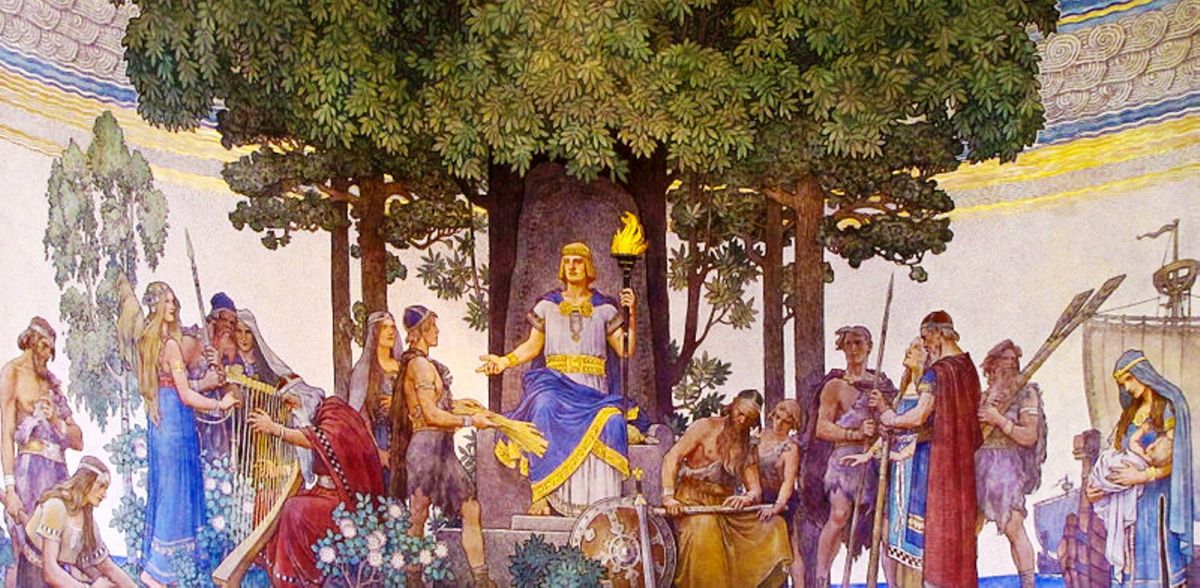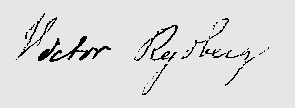Investigations into Germanic Mythology, Vol. II
Undersökningar i Germanisk Mytologi, andra delen, 1889
The First English Translation by William P. Reaves
 |
[HOME]
|
Table of Contents [Page numbers refer are those of the original edition.] |
VOLUME II
| This Text is Available for
Purchase from Amazon.com |
|||||
 Part 1: Indo-European Mythology |
 Part 2: Germanic Mythology (con't) |
||||
Below are Selections from the Text by William P. Reaves
I. Germanic Myths of Proto-Indo-European Origin.
[pp. 1-182]
1.
The Beginning.
2. Ginnungagap.
3. Chaos. The Elements.
4. The Material of Life.
5. The World-Tree.
6. The Three Underworld
Springs.
7. The Primeval Cow.
8. The First in Human
Form.
9. The Primeval Giant.
10. Ymir’s Sea.
11. The Creating Gods.
12. Vâta-Wodan.
13. The Eagle and Suttung’s Mead.
14. Hönir, Lodur, and Fjörgynn.
16. Primeval Smiths and Swan-maidens.
a) The Nine Worlds.
b) The World Mill.
c) Heavenly Lights and Periods of Time.
d) Midgard and the Upper Heavenly World.
21.
Soma-Mimir.
22. The Moon and the Mead.
23. The Creation of
24. Primeval Man and the Original Homeland.
25.
Agni-Heimdall, the Culture-Bringer.
26. The Golden Age. The Patriarchs.
27. Witchcraft. Heidr.
28. Thurses-Demons.
29.
Indra’s Birth and Battles with Demons.
30. Indra’s Protégés and Comrades a) Kutsa-Egil.
31. Indra’s Protégés and Comrades b) Pushan-Thjalfi.
32. The Breach between the Gods and the Primeval Artists.
The Fimbul-Winter.
33.
Yima’s Grove and Mimir’s Grove.
34. The Baldur Myth.
The Journey of the Dead. The Judgment on the Dead.
38. Eschatology (continued).
Fylgjas at the Judgment of the Dead. The Drink of Oblivion.
39. Eschatology (continued). The
40. Eschatology (continued). The Damned.
41. Eschatology (continued). Ragnarök.
42. Eschatology (continued). The Regeneration of the World.
II. Later Germanic Myths
[p.
183-203]
[p. 203-295]
I. The Proto-Indo-European Origin of the Baldur Myth.
II. The Germanic Discouri in Tacitus.
The Name Fol (Falr).
IV. Descendants of the Baldur Myth.
2.
and its Connection with the Poem about Helgi Hjörvardsson.
3.
4. The Relationship of the Myth about Hödur
to the Story of Sigurd Fafnisbane's Youth.
5.
Hárbarðsljóð
in which Harbard is proven to be Loki, rather than Odin.
[pp. 296-327]
Brisingamen’s Smiths
[pp. 328-352]
Additions to the Investigations
of the Myths Concerning Egil-Örvandil and Svipdag:
Vidofnir's Sickle. Egil as Fisher.
[p. 353-368]
Miscellaneous Observations
[pp. 369-374]
[pp. 375-426]
II. The Primeval Age of Peace
III. The Transition from Peace to War.
IV. The Age of War.
The Great War in Midgard.
V. The Historic Era.
VI. Ragnarök.
VII. The World's Renewal.
____________
Towards
a Method of Mythology
[pp.427-482]
| This Text Above is Available for Purchase from Amazon.com and other booksellers |
|||||
 Part 1: Indo-European Mythology |
 Part 2: Germanic Mythology (con't) |
||||
____________
The
Sibylline Oracles and Völuspá
[pp. 483-628]
2nd Treatise
Response from Professor Sophus Bugge
_________
Acknowledgements[p. 629]
__________
Published by Albert Bonniers
Förlag,
________
Volume I
|
Viktor Rydberg's
[Mythological Works] |
 |
[Germanic Mythology] |